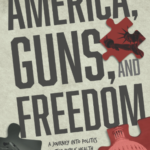New Deal Reality Check
As self-proclaimed intellectuals get embarassingly excited over the prospect of a new, New Deal, the rest of us would do well to take every opportunity to examine how the first one turned out. For one thing, it didn’t start under Roosevelt.
In The Politically Incorrect Guide To The Great Depression And The New Deal, economist Robert P. Murphy, Ph. D., gives us a very useful comparison of what happened in another recession that occurred in the 1920s when so-called laissez-faire economics was practiced and the more famous economic collapse when it wasn’t.
“The annual unemployment rate peaked at 11.7 percent in 1921, but it had fallen to 6.7 percent by the following year, and was down to an incredible 2.4 percent by 1923,” Murphy writes. “That is how a market with flexible wages and prices quickly corrects itself after a Fed-induced inflationary boom.”
“But because the ‘compassionate’ Hoover forbade businesses from cutting wages after the 1929 crash, unemployment went up and up and up, hitting the unimaginable peak of 28.33 percent in March 1933.” “Compassionate conservatism,” then, is not a terribly new deal either.
“During every single year of the Roaring ‘20s, the federal government had run budget surpluses, which it used both to justify [U. S. Secretary of the Treasury Andrew] Mellon’s bold tax cuts as well as retire a large portion of the public debt,” Murphy relates. “(Following the massive borrowing needed for World War I, the federal government paid down the debt from $25.5 billion in FY [Fiscal Year] 1919 to $16.2 billion in FY 1930.)”
“When Hoover came into office, he inherited a sizable surplus of $700 million, which was a hefty sum in relation to a federal budget that was only $3.3 billion.” Until Hoover’s accession to the White House, presidents usually responded to recessions by not by boosting cutting federal spending but by making actual cuts in the budget.
Even FDR’s one-time patron, Democratic President Woodrow Wilson, did so. “With the conclusion of World War I, the U. S. government slashed its budget from $18.5 billion in FY 1919 down to $4.8 billion one year later,” Murphy reminds us. “As the U. S. economy entered a depression at the turn of the decade, receipts fell.”
“The Wilson Administration responded by cutting spending even more, down to $5.0 billion in FY 1921 and then following with a single-years slash of 34 percent, down to $3.3 billion in FY 1922.”
“Only once since World War II, in 1947 through 1949, did the federal government have three consecutive budget surpluses,” the Joint Economic Committee reported in 1998. “The only other postwar back-to-back surpluses came in 1956 and 1957.”
“By contrast, before the Keynesian Revolution of the 1930s, on three occasions the U.S. ran 10 or more years of consecutive budget surpluses: 1825-1836 (12 years); 1866-1893 (28 years), and 1920-1930 (11 years)” (emphasis in original source).
In fact, here, from Barack Obama’s own budgeteers, are the Hoover/Roosevelt
deficits from 1931 to 1940:
1931—$462 million
1932—$2.7 billion
1933—$2.6 billion
1934—$3.5 billion
1935—$2.8 billion
1936—$4.3 billion
1937—$2.4 billion
1938—$486 million
1939—$3.3 billion
1940—$3.4 billion
Source: U. S. Office of Management and Budget
Please note that the biggest deficit of the 1930s occurred in 1936, the year in which FDR first ran for reelection. That shortfall came on top of the biggest budget of the Depression, which totaled $8 billion.
Although the Keynesians tell us that budget deficits are the price that we have to pay for full employment, that equation did not seem to pan out when followers of Lord Keynes held full sway in the 1930s. “From an estimated annual rate of 3.3 percent during 1923-29, the unemployment rate rose to a peak of about 25 percent in 1933,” two U. S. Bureau of Labor economists reported in 2001. “The economy reached its trough in 1933; but although unemployment had reached its peak, economic recovery was slow, hesitant, and far from complete.”
“As shown below, the unemployment rate was still nearly 15 percent in 1940.
Year Unemployment
Rate (%)
1923-1929
3.3
1930 8.9
1931 15.9
1932 23.6
1933 24.9
1934 21.7
1935 20.1
1936 17.0
1937 14.3
1938 19.0
1939 17.2
1940 14.6
1941 9.9
1942 4.7
Malcolm A. Kline is the executive director of Accuracy in Academia.




